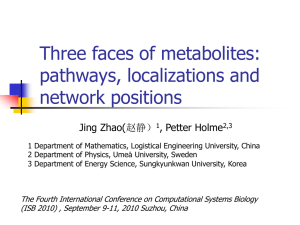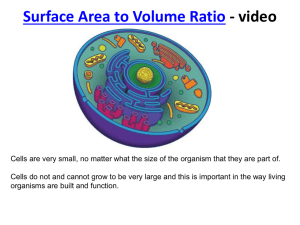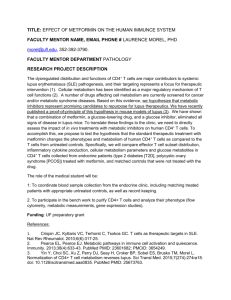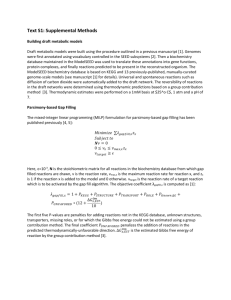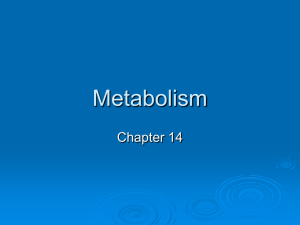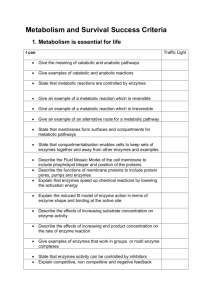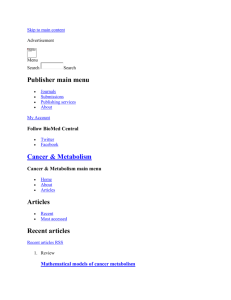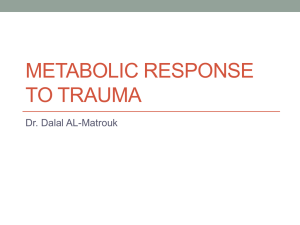Presentation
advertisement
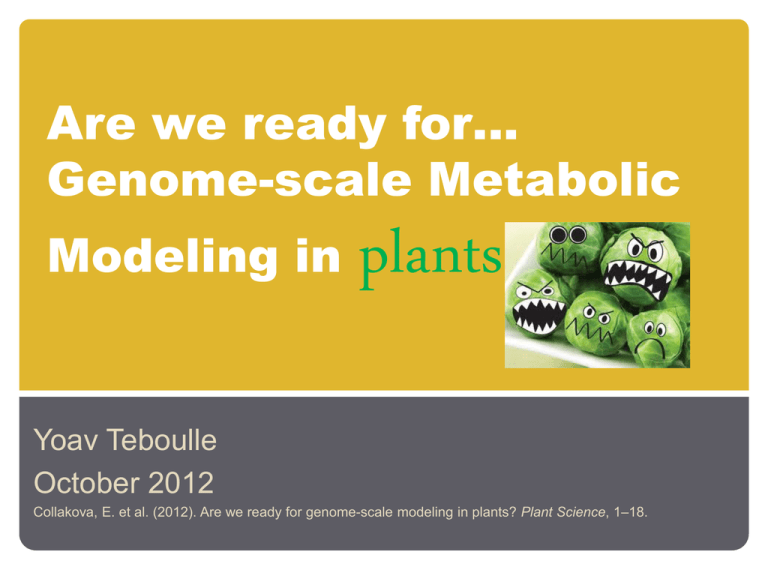
Are we ready for… Genome-scale Metabolic Modeling in plants Yoav Teboulle October 2012 Collakova, E. et al. (2012). Are we ready for genome-scale modeling in plants? Plant Science, 1–18. Outline Motivation What’s been done… Why is it tough to model plants? What are we doing about it? The future… Motivation: Why genome-scale modeling? Reductionist Tinkering studies of approaches to individual metabolic reactions and engineering pathways Rational design An integrated approach to view of metabolic metabolism engineering Motivation: Why plants? Motivation: Why plants? Manipulation of plant metabolism Food Pharm Feed Fuel Hibberd, J. M., & Weber, A. P. M. (2012). Plant metabolism and physiology. Current opinion in plant biology, 15(3), 225–227. So far: existing plant models Arabidopsis (Poolman, 2009) Barley C4 Plants: maize, sugarcane, sorghum (Grafahrend-Belau, 2009) Oilseed rape (Dal’Molin, 2010) (Hay, 2011) Zea mays (Saha, 2011) Tomato…Rice…Lemna…? Is that it?! What’s so hard about modeling plants? Plant cell metabolism is complex… E.coli Base pairs Genes Proteins included in GSMM 4.6M 4000-5000 1366 (30%+) 30000 3500 (10%+) Arabidopsis 135M Collectively, plants produce over and secondary) metabolites (primary Is that it?! What’s so hard about modeling plants? The complexity of plant cell metabolism means that little is known… Experimental data is of limited coverage & bad quality Zhu et al., Elements of a dynamic systems model of canopy photosynthesis, Current Opinion in Plant Biology, Volume 15, Issue 3, June 2012, Pages 237-244 …which subsequently leads to poor annotation Experimentally determined molecular function ~15% Computationally determined molecular function ~40% ??? ~45% …which leave us with relatively poor models Hibberd, J. M., & Weber, A. P. M. (2012). Plant metabolism and physiology. Current opinion in plant biology, 15(3), 225–227. Is that it?! What’s so hard about modeling plants? Enzyme sub-cellular compartmentalization presents another challenge in plant modeling Duplicated pathways of central carbon metabolism, such as glycolysis Different organelles provide different conditions for metabolism in terms of • pH • Salt concentrations • Energy/redox status Transporters between organelles and cytosol need to be identified de Oliveira Dal’Molin, C. G., & Nielsen, L. K. (2012). Plant genome-scale metabolic reconstruction and modeling. Current Opinion in Biotechnology, 1–7. Is that it?! What’s so hard about modeling plants? Photosynthesis & photorespiration also contribute to the complexity… Model assurance is unclear when dealing with tissues whose photosynthesis is not clear-cut Different pathways active in light and dark …as do the diversity of plant cell and tissue types… …which causes difficulty in the selection of appropriate objective functions de Oliveira Dal’Molin, C. G., & Nielsen, L. K. (2012). Plant genome-scale metabolic reconstruction and modeling. Current Opinion in Biotechnology, 1–7. Excuses, you say…? Numerous stresses Multiple Objectives Redirected Flux So what CAN the models do…? Existing models are predictive where central metabolism is concerned, less so in secondary metabolism These models demonstrate the applicability of metabolic modeling approaches to plant cells… …but still have difficulty in providing meaningful metabolic and mutant predictions What are WE doing about it? Arabidopsis Zea Mays What are WE doing about it? Two newer Arabidopsis models AraGEM model MOm (de Oliveira Dal’Molin, Plant Physiology, ‘10) (Mintz-Oron et al. PNAS, 2011) Primary metabolism Primary and secondary metabolism 1567 reactions 3509 reactions 1748 metabolites 2930 metabolites cytoplasm, mitochondrion, plastid, peroxisome, and vacuole cytoplasm, plastid, mitochondrion, endoplasmic reticulum, peroxisome, vacuole and golgi-apparatus Minimal medium Rich + minimal media What are WE doing about it? Model improvement Apply existing datasets Apply novel datasets: Asaph Aharoni’s Lab, Weizmann • biomass measurements • organelle-specific ‘omics • gene essentiality data • flux measurements What are WE doing about it? Searching for ways to augment the production of: Tocopherol (vitamin E) – antioxidant function Thiamine (vitamin B1) – prevention of neural and other disorders What are WE doing about it? Mays model Verification and improvement of the existing model Saha, R., Suthers, P. F., & Maranas, C. D. (2011). Zea mays iRS1563: a comprehensive genome-scale metabolic reconstruction of maize metabolism. PloS one, 6(7), e21784. Progress to a tissue-specific model • Use transcriptome and proteome data to extract a subset of reactions • Define tissue-specific biomass composition and metabolite exchange Increased yield in target pathways based on bacterial gene transformation The FUTURE Focus on secondary metabolism Progress in ‘omics technologies Better use of what we know! Choose model systems we can experimentally validate Apply known constraints Define appropriate objective functions Integrate regulatory mechanisms The FUTURE Rational Plant Metabolic Engineering Biomass Production Resistance Stress Tolerance So, are we ready for genome-scale modeling in plants? Definitely! Questions...? THANKS!

